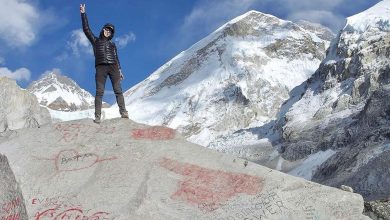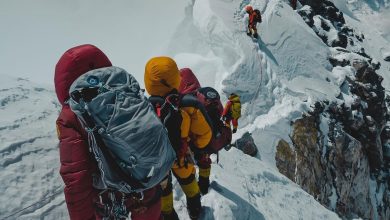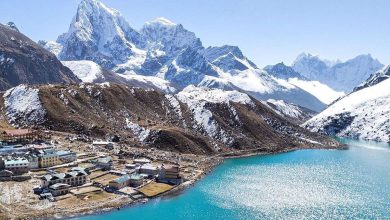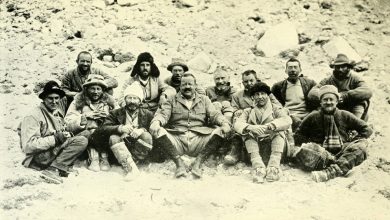The Everest Balcony: World’s Highest Weather Station At 8430m
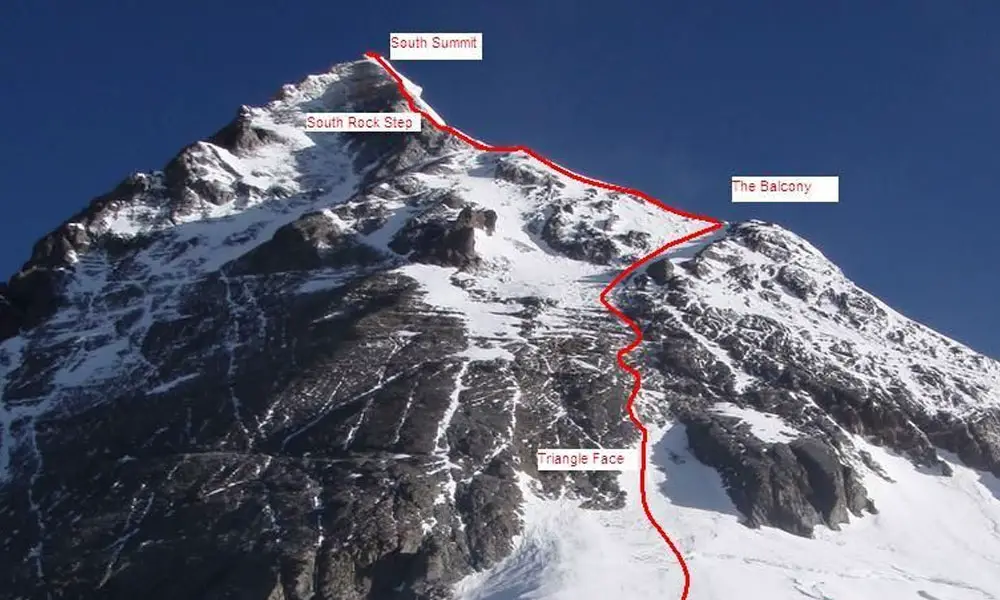
If you are familiar with Everest and the expeditions launched, you should probably know about the Balcony Area. Everest’s Balcony is known to all mountaineering officials as it is one of the most popular weather stations in the world. Many climbers consider it a perfect place to prepare for their final summit push to the top of Everest. So, acclimatization and preparation for the last phase of climbing Everest are all operated on Everest’s Balcony.
But what is the Balcony Region? Read the full blog below to learn more about it!
Understanding The Balcony On Everest
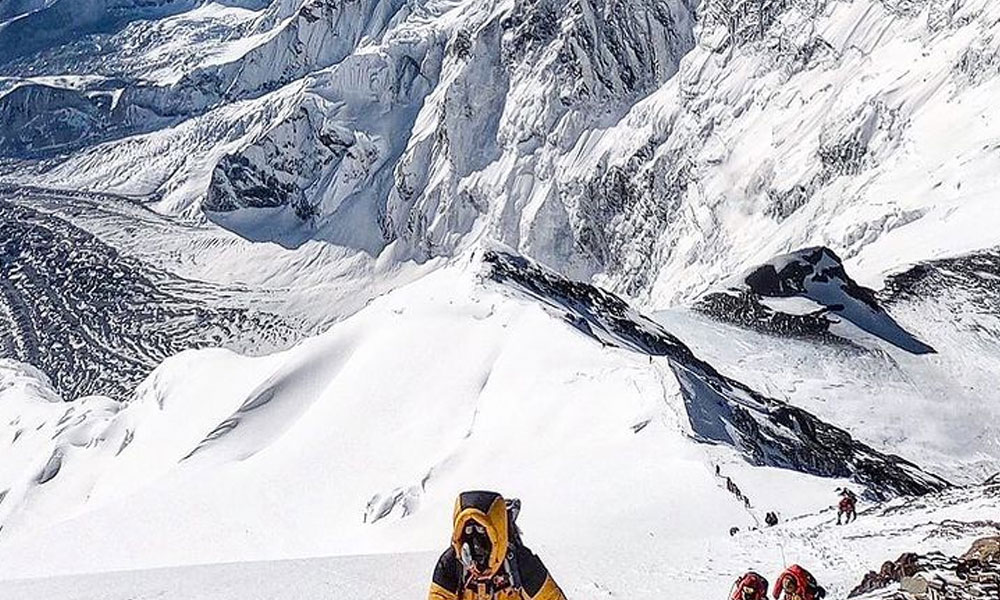
The Balcony Region on Everest is a fascinating section that has been intriguing climbers for decades. It is one of the highest weather stations in the planet Earth. It sits 8,430 meters (27,657 feet) above sea level and is the step before you push your summit during Everest Expedition. Most of all, The Balcony Section on Everest is a prominent landmark on the treacherous path to the summit. With its distinctive appearance, altitude, and resemblance to a balcony-looking area from an icy slope, this place has been one of the most popular aspects of the Everest Expedition.
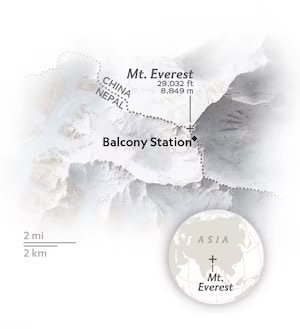 The journey to Everest’s Balcony is not an easy task. While they say Everest Expedition needs a high level of physical fitness and mental endurance, it sums up The Balcony too. Climbers need extensive mountaineering experience and a background honed with advanced technical climbing skills. On top of that, physical, mental, and gear preparation comes second to none. High altitude, treacherous landscapes, challenging terrains, and unpredictable weather conditions make the climb to The Balcony more challenging and technical.
The journey to Everest’s Balcony is not an easy task. While they say Everest Expedition needs a high level of physical fitness and mental endurance, it sums up The Balcony too. Climbers need extensive mountaineering experience and a background honed with advanced technical climbing skills. On top of that, physical, mental, and gear preparation comes second to none. High altitude, treacherous landscapes, challenging terrains, and unpredictable weather conditions make the climb to The Balcony more challenging and technical.
Nevertheless, The Balcony on Everest is a great viewpoint. It fuels your Everest Expeditions with a visual feast that surpasses all expectations. The beautiful scenery of the Mahalangur Mountain Range peaks, including Everest itself, is one of the breathtaking experiences. The sloppy landscapes that stretch to the base camp, the sheer cliffs, and the serenity of snow-capped peaks like Ama Dablam, Lhotse, Cho Oyu, and others are awe-inspiring.
View this post on Instagram
The History and Significance of Everest’s Balcony
The Balcony on Everest has a dimension of a tennis court. It has been used as a place to rest and explore the surrounding views of the Everest Region on the verge of making the final summit push to the top of the world’s highest peak. It has a fascinating history and stories throughout the decades while climbing Mount Everest. Let’s explore the captivating stories of this iconic place on Everest.
Early Exploration and Pioneering Climbers
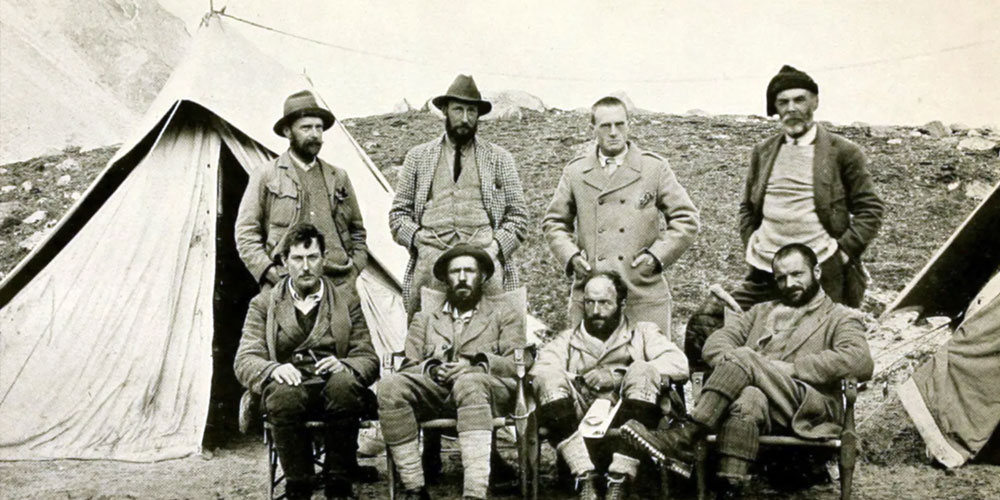
There has been a significant hike in the trend of climbing Mount Everest in recent decades. More than 11,000 ascents have been already made to the top of Everest. However, climbing the peak is not as easy as you see. The challenging terrain and extreme weather conditions pose a great threat since it causes numerous accidents and even death. The first climbers to reach The Balcony Region on Everest were Raymond Lambert and Tenzing Norgay during the 1952 Swiss Expedition. Similarly, the second ascend to the balcony was made by Tom Bourdillon and Charles Evans during the 1953 Expedition when they reached just below 100 meters from the summit and halted due to exhaustion.
During the early 20th century, it was almost impossible to scale Everest. Several climbers like George Mallory and Andrew “Sandy” Irvine lost their lives while attempting to climb. But Edmund Hillary and Tenzing Norgay Sherpa paved the way to its top, after which The Balcony Region also came into the limelight.
But Everest’s Balcony has encountered several mishaps and failed attempts throughout the year. It has witnessed many shattered and fulfilled dreams ranging from the first attempts of George Mallory. With the failed attempts of Mallory to the successful ascents of Edmund Hillary and Tenzing Norgay Sherpa, The Balcony Region of Everest carries a great historical significance of mountaineering in Everest. To date, more than 11,000 summit ascents have been made by over 6000 climbers.
A Sanctuary for Nature’s Marvels
Everest’s Balcony is a perfect place to have spectacular views of nature and the Himalayas of Nepal. While it might be difficult to reach this region, the stunning scenery will soothe the journey. Here are some of the beautiful aspects that you might get a view of:
Himalayan Mountain Range:
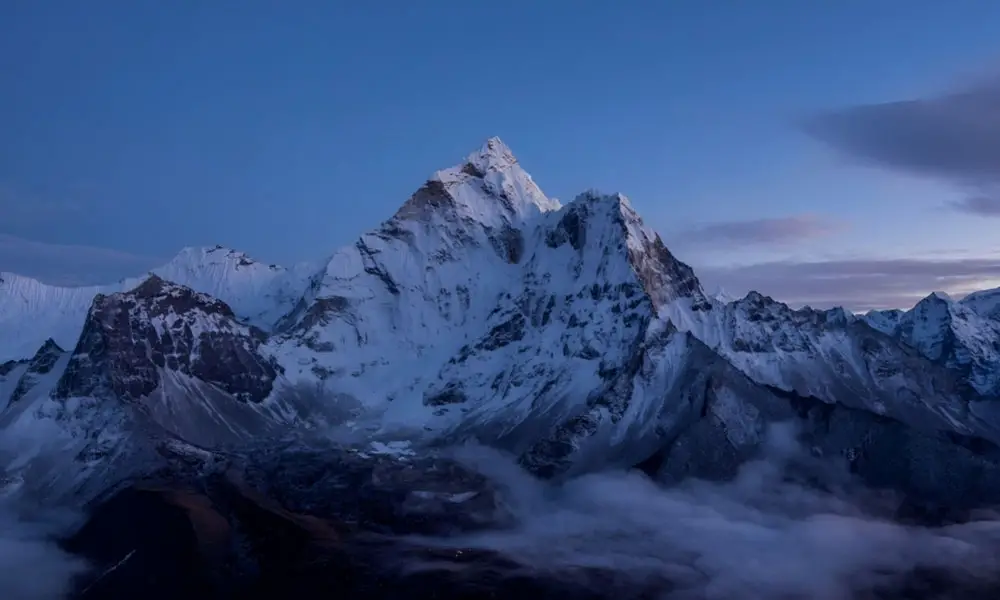
Climbers can see the long and stretch view of the Himalayan Mountain Range, including peaks from the Mahalangur Range. Everest itself lies in this range. Here are some of the peaks you will get to see from Everest’s Balcony:
Mount Everest: Climbers can view Everest’s uphill and downhill sections from The Balcony. The steep faces of the mighty peak covered with huge sheets of ice and snow offer breathtaking views.
Lhotse: Lhotse is adjacent to Mount Everest, and from The Balcony, climbers can have a nearby view of it. It is the fourth highest peak in the world and sits with its impressive pyramid-shaped style.
Makalu: Mount Makalu lies in the southeast direction of Everest’s Balcony. During the morning, climbers can have stunning sunrise views and the golden touch on the top of Makalu with its rays.
Nuptse: Nuptse lies on the western side of Everest’s Balcony. The pointed shape and towering presence of the mighty mountain are what climbers seek to watch from the Balcony section of Everest.
Other Attractions: Though Everest’s Balcony is over 8000 meters above sea level, it still gives a perfect view of Khumbu Glacier, Deep Valleys, and the green hill in the far-sight. The rugged landscape, forming an intricate network of dramatic landscapes, is visible from this viewpoint, where the final summit push to Everest begins.
Difficulty Level of Everest’s Balcony
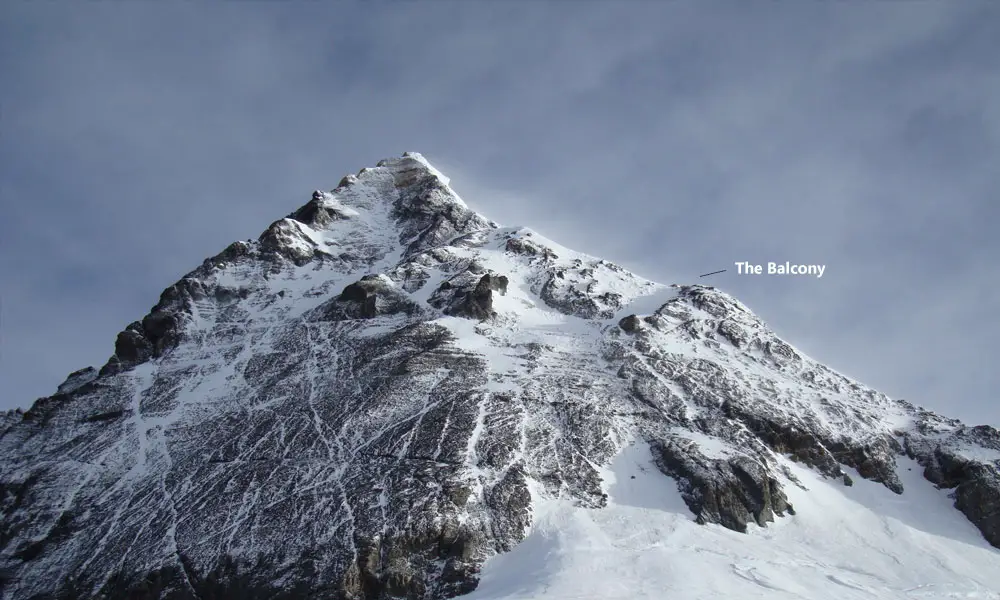
The difficulty level of Everest’s Balcony is challenging. Though the difficulty level might not equal other sections of the Everest route, it still poses a great threat and risk to climbers. The balcony has the size of a tennis court, but that does not mean it is completely plain. It still is sloppy, filled with large piles of snow and ice sheets. But for resting and acclimatization, The Balcony region is a perfect place for climbers. It is a factual trend that climbers acclimate and rest on The Balcony before they climb to the summit. Most of the time, climbers tend to accommodate this section with a tented camp before the final summit push.
The first thing to consider is its elevation. It is 8430 meters above sea level and poses altitude-related issues like AMS, HACE, and HAPE. So altitude sickness is a major concern here. Difficulty breathing, fatigue, nausea, and dizziness are some symptoms you might get. So preparing with safety measures, acclimatization, and physical fitness are crucial during your stay at Everest’s Balcony.
You may also like:
- Kilimanjaro vs Everest Base Camp Trek
- What It’s Really Like Climbing Hillary Step
- Recovered and Not Recovered Bodies on Everest Death 2023
- Dangers of Climbing Mount Everest
Track world’s highest operating weather station at Balcony (8,430 m) on Mt #Everest live here: https://t.co/9tUogNBmak. pic.twitter.com/N6KtzqXOle
— Everest Today (@EverestToday) June 17, 2019
Preparation For The Balcony Ascent
Physical Fitness:
Reaching Everest’s Balcony is challenging, so climbers must be concerned about improving their physical fitness. Strength training to build muscle strength, endurance, altitude training, and stamina workouts will help climbers reach the physical requirements of Everest’s Balcony.
Climbing Experience:
Climbing experience is a must. To embark on the Everest Expedition and reach The Balcony region is challenging, and if climbers do not have prior climbing experiences, it is even life-threatening. It requires technical climbing skills like properly using ice axes, crampons, climbing ropes, and other gear.
Acclimatization:
Acclimatization is very important. The main motive of acclimatization is to adjust your body to the existing altitude. When climbers reach Everest’s Balcony, they are already over 8,000 meters, and the need for acclimatization is even greater. So climbers must focus on a gradual ascent, hydration, nutrition, and enough rest before the final summit push.
Required Equipment:
- Durable and warm down-filled sleeping bag
- A four-season tent
- Crampons
- Ice axes
- High-altitude boots.
- Weather-friendly clothing layers
- Harness, carabiners, ropes, and other technical climbing equipment
- Reliable and lightweight backpack
Frequently Asked Questions (FAQs)
What is Everest’s Balcony?
Everest’s Balcony is a spare place en route to the summit of Mount Everest. It is a slightly inclined land space; a size of a tennis court, where climbers rest and acclimatize before they embark on a final summit push.
What is the altitude of Everest’s Balcony?
Everest’s Balcony is 8,340 meters above sea level.
How long does it take to reach Everest’s Balcony?
The duration of reaching Everest’s Balcony depends on the climber’s physical fitness, time of year, preparation, and many other aspects. But on average, it takes around 6 to 8 weeks to reach Everest’s Balcony (in a Standard Everest Expedition Package).
What are the risks involved in climbing Everest’s Balcony?
The risks of climbing Everest’s Balcony are altitude sickness, avalanches, frostbite, and high winds. The unpredictable and extreme weather conditions pose more threats when it comes to climbing Everest.
Are there any accommodations near Everest’s Balcony?
Everest Balcony is a high-altitude location, so no permanent accommodation facilities are nearby. Climbers must set up a tented camp to accommodate themselves before they go on a final summit push.
Can non-climbers stay at Everest’s Balcony?
People with no climbing experience are not recommended to stay at Everest Balcony since they might suffer from tragic mishaps due to extreme weather and climate conditions.
What is the best time of year to climb Everest?
Autumn (September to November) and Spring (March to May) are the best time of year to climb Everest.
